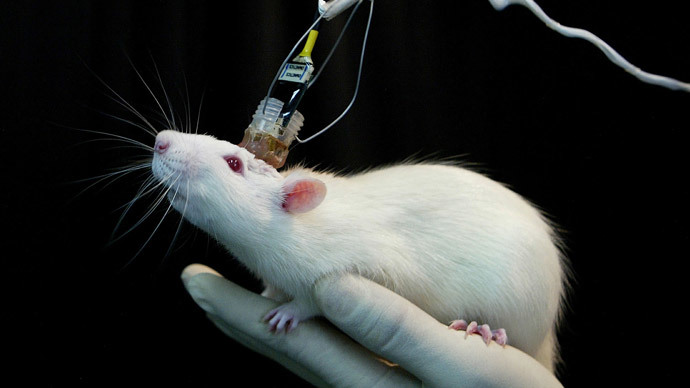Scientists learn to selectively erase and restore memories in brain

Wiping out memories at a press of a button – just like with a ‘neuralizer’ from the Men in Black movie – may soon become a reality. Researchers have managed to erase and then restore lost memory in genetically modified rats with a flash of light.
The study by researchers from University of California in San Diego, published in Nature journal , is the first cause-and-effect evidence that strengthening or weakening connections between neurons in the brain can influence particular memories.
“We can form a memory, erase that memory and we can reactivate it, at will, by applying a stimulus that selectively strengthens or weakens synaptic connections,” study senior researcher Dr. Roberto Malinow, a professor of neurosciences said in a university press release.
The neuroscientists’ findings may hold big potential for the treatment of such diseases as Alzheimer's and post-traumatic stress disorder (PTSD).
To prove their theory, Malinow and his colleagues resorted to a state-of-the art technique – optogenetics. Optical lasers were applied to stimulate a group of nerves in the brains of rats that had been genetically engineered to make them sensitive to light. Simultaneously, they sent an electrical shock to the animal's foot.
Soon, the rats learned to see the connection between the optical stimulation and the pain and displayed fear every time the nerves were stimulated. Further analyses revealed that chemical changes occurred within the optically stimulated nerve synapses, which indicates the synaptic strengthening of that memory.

In the next stage, the scientists stimulated the same nerves in a different way – with a memory-erasing, low-frequency sequence of optical pulses. Eventually the rats no longer responded to the nerve-situation with fear, which indicated that the pain-association memory had been erased.
The work’s most striking finding though was the lost memories could be restored by the re-stimulation of the same nerves with memory-forming, high-frequency pulses. Such re-conditioned rodents yet again responded with fear to the stimulation. And that is while they had not had their feet shocked this time.
“We can cause an animal to have fear and then not have fear and then to have fear again by stimulating the nerves at frequencies that strengthen or weaken the synapses,” explained the study’s lead author Sadegh Nabavi.
It is too early to speak about using the same technology on humans, but researchers believe it could have potential benefits and clinical applications.
The beta amyloid peptide that accumulates in the brains of people who suffer from Alzheimer's disease weakens synaptic connections in much the same way that low-frequency stimulation erased rats’ memories, Malinow said.
“Since our work shows we can reverse the processes that weaken synapses, we could potentially counteract some of the beta amyloid’s effects in Alzheimer's patients,” he said.














